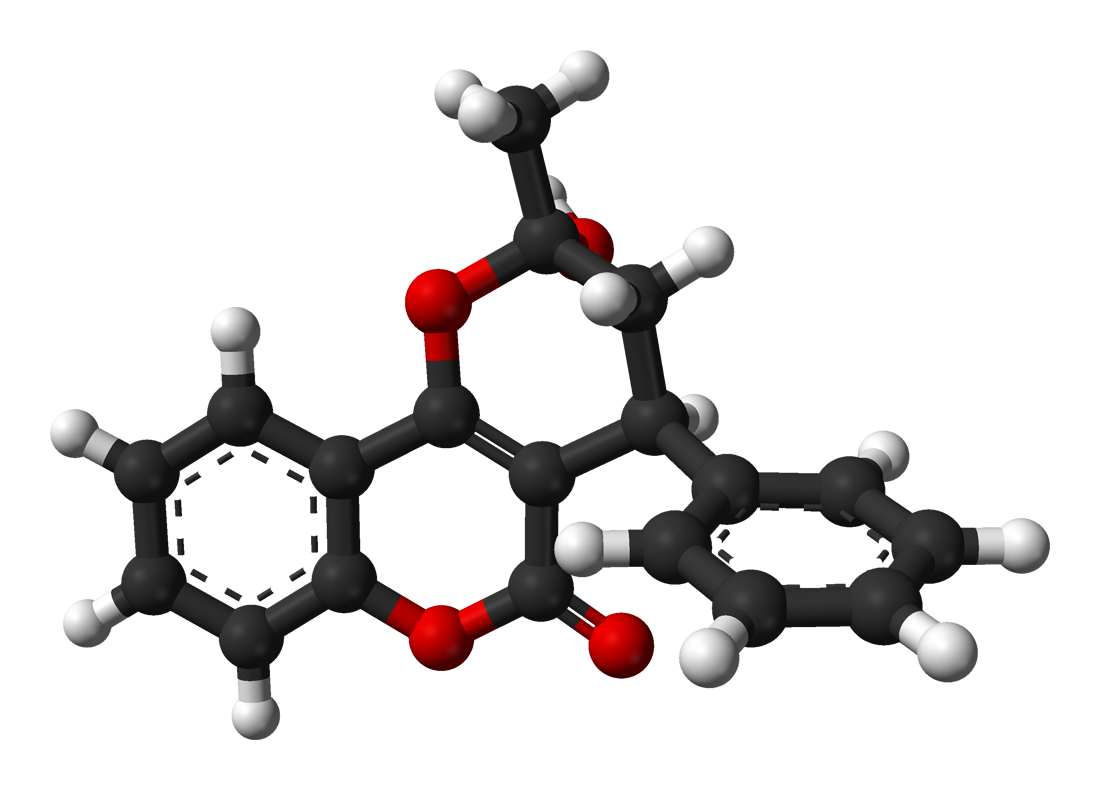· IUPAC name: (RS)-4-hydroxy- 3-(3- oxo- 1-phenylbutyl)- 2H- chromen- 2-one
· 2-dimensional structure:
· 3-D Structure:
· Chemical formula: C19H16O4
· Molecular weight: 308.3 g/mol
· Physical properties
o Melting Point: 161⁰C
- Boiling points: Decomposes at 760 torr
- H2O solubility: Insoluble in H2O
- Benzene Solubility: Insoluble in Benzene
Intermolecular forces present in the molecule: Warfarin has dispersion forces, as well as dipole- dipole forces. It is capable of forming hydrogen bonds with other molecules. Warfarin also has 41 sigma bonds and 9 pi bonds.
Sources:

Determine the vapor pressure (in mm Hg) of substance A at 5 degrees Celsius, given that it's normal boiling point is 76 degrees Celsius and that the ΔHvap is 38.7 kJ/mol.
ReplyDeleteTextbook or Sapling question...?
Delete23232.8 mmHg
ReplyDeleteWhat is this? No calculations or any work is shown?
DeleteTo solve this problem, you must use the Clausius Clapyron equation.
ReplyDeleteln (P2/P1)= (-ΔHvap/R)*(1/T2-1/T1)
We can use this form of the equation to predict the vapor pressure of a liquid at any temperature if we know ΔHvap and the normal boiling point. R is a constant in this equation (8.314J/mol*K). We must also be sure to convert the given temperatures from Celcius to Kelvin and convert pressure in kJ to Joules. 1 torr= 1mmHg.We assume that P1 is equvalent to 1 atm which is equivalent to 760mmHg.
ln (p2/p1)= (-38700J/mol)/(8.314J/K*mol)*((1/278K)-(1/349K))
=-3.41
p2/p1= e^-3.41
P2=p1*e^(-3.41)
P2=(760mmHg)(.033)
P2=25.11mmHg
Source: Chemistry: A Molecular Approach, Tro
Seems alright now.
ReplyDelete